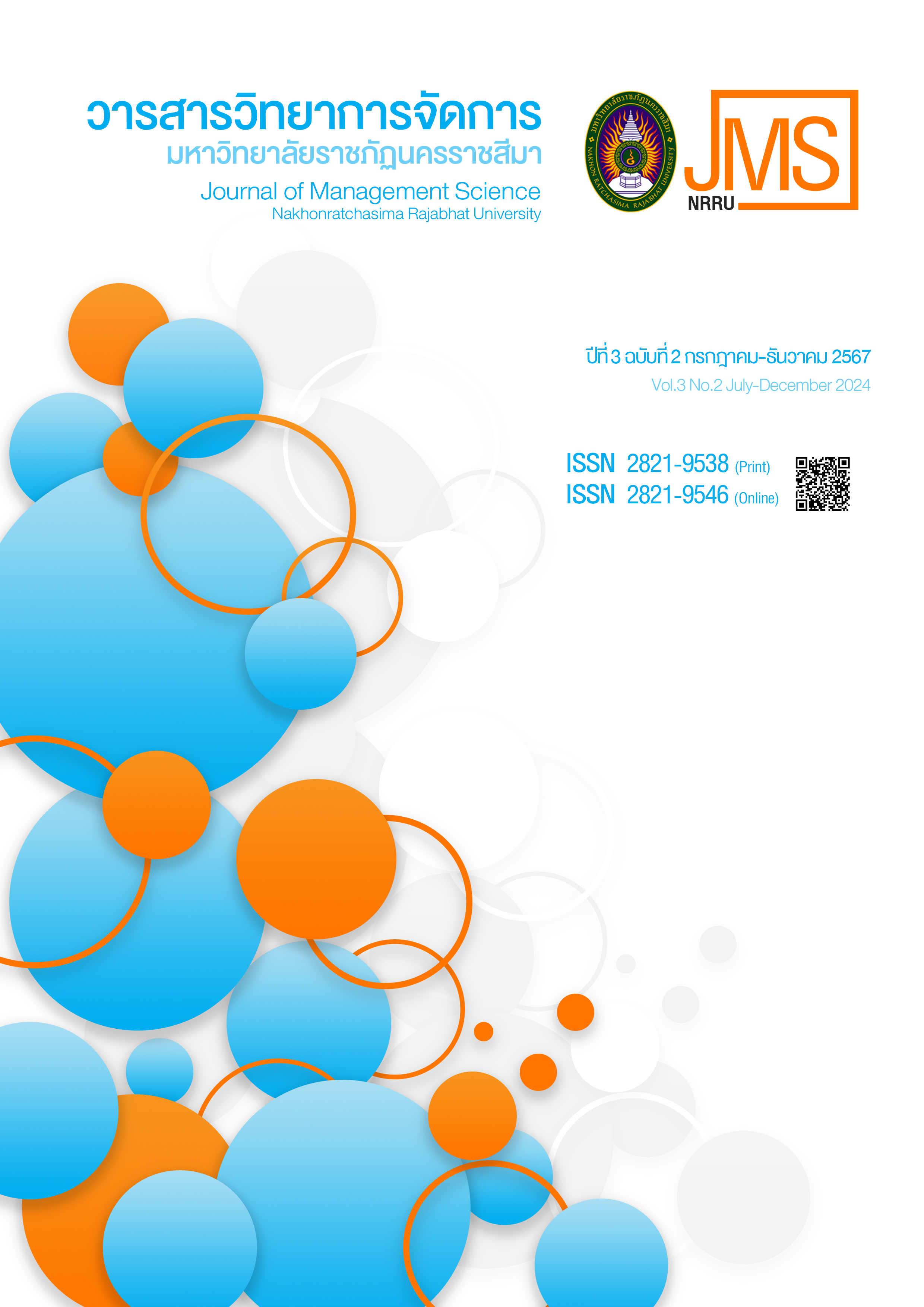Business Model for Competitive Advantages of SMEs in Upper Northern Region Cluster 2
Main Article Content
Abstract
The objectives of this research were 1) to study the business model of SMEs in Upper Northern Region Cluster 2, 2) to study the competitive advantage strategies of SME entrepreneurs in Upper Northern Region Cluster 2, and 3) to construct SME competitive advantage business model in Upper Northern Region Cluster 2. The research employed a mixed-methods approach. The data was gathered, by the questionnaire as a tool, from 400 customers of SMEs in the Upper Northern Region Cluster 2. In addition, the in-depth interview was conducted with SME business operators in Upper Northern Region Cluster 2, with 5 participants from each province, totaling of 20 people.
The findings revealed that 1) the customers of SMEs emphasized the importance of developing products or distinctive services. SME businesses could quickly respond to customer needs through technology and provided after-sales services to build customer relationships,
2) the competitive advantage strategies should consider the factors of economy, politics, society, technology, bargaining power, substitute products and cost leadership and 3) creating the competitive business model should be involved with the differentiated products or services,
the competitive pricing, the distribution channels, the emphasis on problem-solving, the entrepreneurs’ business comprehension, the sufficient capital for business operations, and the business advantage from product and service differentiation as well as the cost leadership.
Article Details

This work is licensed under a Creative Commons Attribution-NonCommercial-NoDerivatives 4.0 International License.
บทความในวารสารเป็นลิขสิทธิ์ของวารสารวิทยาการจัดการ มหาวิทยาลัยราชภัฏนครราขสีมา
บทความที่ปรากฎในวารสารเป็นความคิดเห็นของผู้แต่งเพียงอย่างเดียวซึ่งไม่เกี่ยวข้องกับวารสาร
References
เขมิกา ธนธำรงกุล และคณะ. (2563). “โมเดลธุรกิจเพื่อสร้างความได้เปรียบในการแข่งขันของธุรกิจจำหน่าย เครื่องจักรกลการเกษตรในจังหวัดเชียงใหม่.” วารสารวิชาการมหาวิทยาลัยราชภัฏศรีสะเกษ. 14(2) : 51-62.
ยุพาภรณ์ ชัยเสนา, อนันตพร พุทธัสสะ และฉัตรรัชดา วิโรจน์รัตน์. (2565). “การพัฒนากลยุทธ์การบริหารจัดการเพื่อสร้างความได้เปรียบทางการแข่งขันของวิสาหกิจชุมชนกลุ่มทอผ้า บ้านกุดหว้า จังหวัดกาฬสินธุ์.” วารสารศิลปศาสตร์และวิทยาการจัดการ มหาวิทยาลัยเกษตรศาสตร์. 9(1) : 50-65.
ศิวกร อโนรีย์. (2564). ปัจจัยที่มีผลต่อความได้เปรียบทางการแข่งขันและความสำเร็จของผู้ประกอบการวิสาหกิจขนาดกลางและขนาดย่อมในเขตจังหวัดราชบุรี. วิทยานิพนธ์บริหารธุรกิจมหาบัณฑิต มหาวิทยาลัยศิลปากร.
สำนักงานส่งเสริมวิสาหกิจขนาดกลางและขนาดย่อม. (2566). รายงานสถานการณ์ MSME ปี 2566. กรุงเทพฯ : สำนักงานส่งเสริมวิสาหกิจขนาดกลางและขนาดย่อม.
Cronbach, L. J. (1974). Essentials of psychological testing. 3rd ed. New York : McGraw-Hill.
Eldor, L. (2020). Participation and capability in creating competitive advantage in competition: A collaborative vision-sharing business model, competition intensity and service efficiency. [online]. Source : https://en-coller.tau.ac.il/profile/liateldor. [November 30, 2023].
Sambo, M. (2021). The ability of information technology (IT) and its competitive advantage. [online]. Source : https://shorturl.asia/Aa820. [November 30, 2023].
Nastasi, B. K., & Schensul, S. L. (May – June 2005). “Contributions of qualitative research to the validity of intervention research.” Journal of School Psychology. 43(3) : 177-195.
Osterwalder, A., Pigneur, Y., & Tucci, C. L. (2005). “Clarifying business models: Origins, present, and future of the concept.” Communications of the Association for Information Systems.
(1) : 1-25.
Porter, M. E. (2008). “The five competitive forces that shape strategy.” Harvard Business Review. 6(1) : 78-93.
Pietrewicz, L. (2019). “Technology, business models, and competitive advantage in the age of industry 4.0.” Problemy Zarzadzania. 17(2(82)) : 32-52.
Rovinelli, R. J., & Hambleton, R. K. (1977). “On the use of content specialists in the assessment of criterion-referenced test item validity.” Tijdschrift voor Onderwijsresearch. 2(2) : 49-60.
Thompson, A. A., & Strickland, A. J. (2003). Strategic Management: Concepts and Cases. 13th ed. New York : McGraw-Hill.
Yamane, T. (1973). Statistics: An introductory analysis. 3rd ed. New York : Harper and Row.


